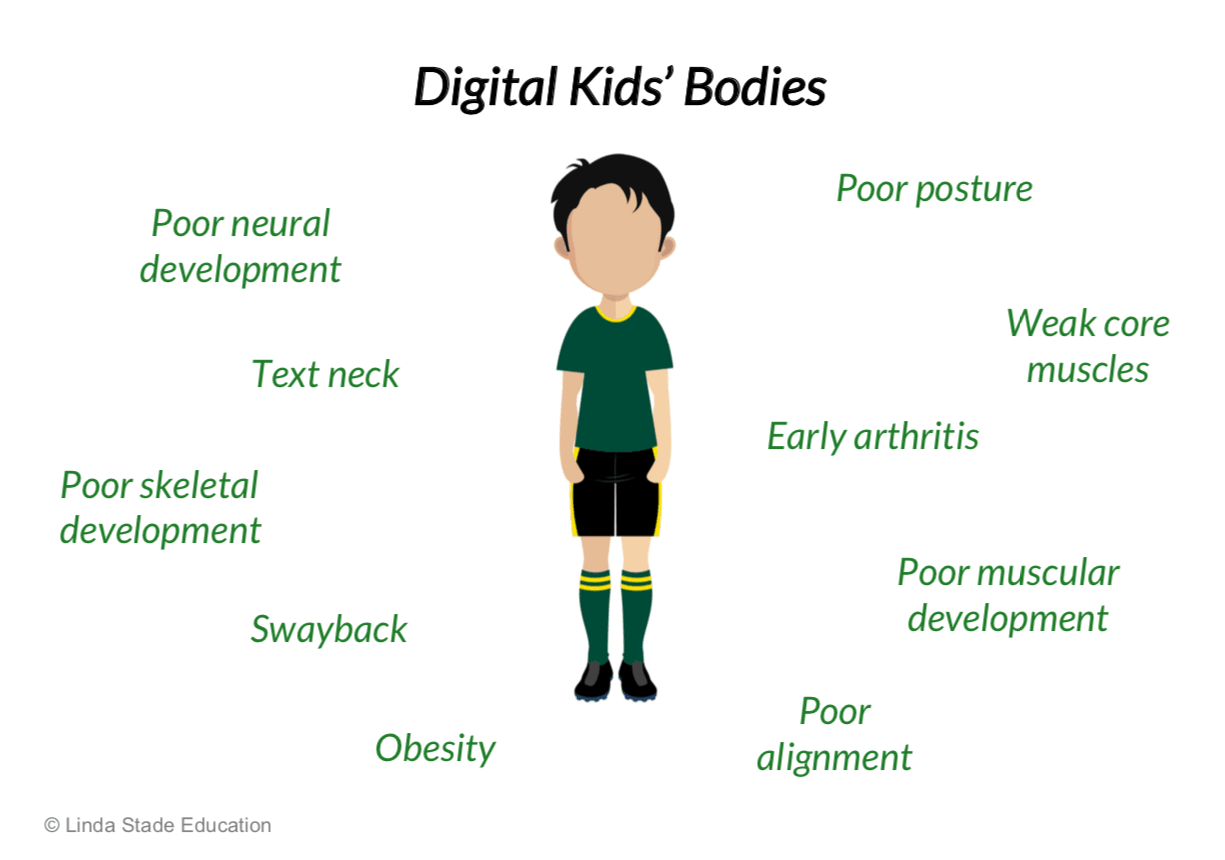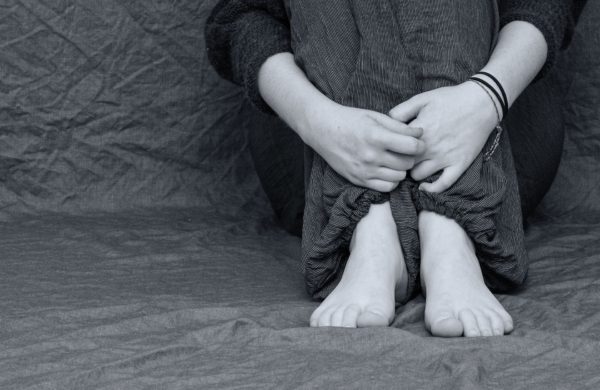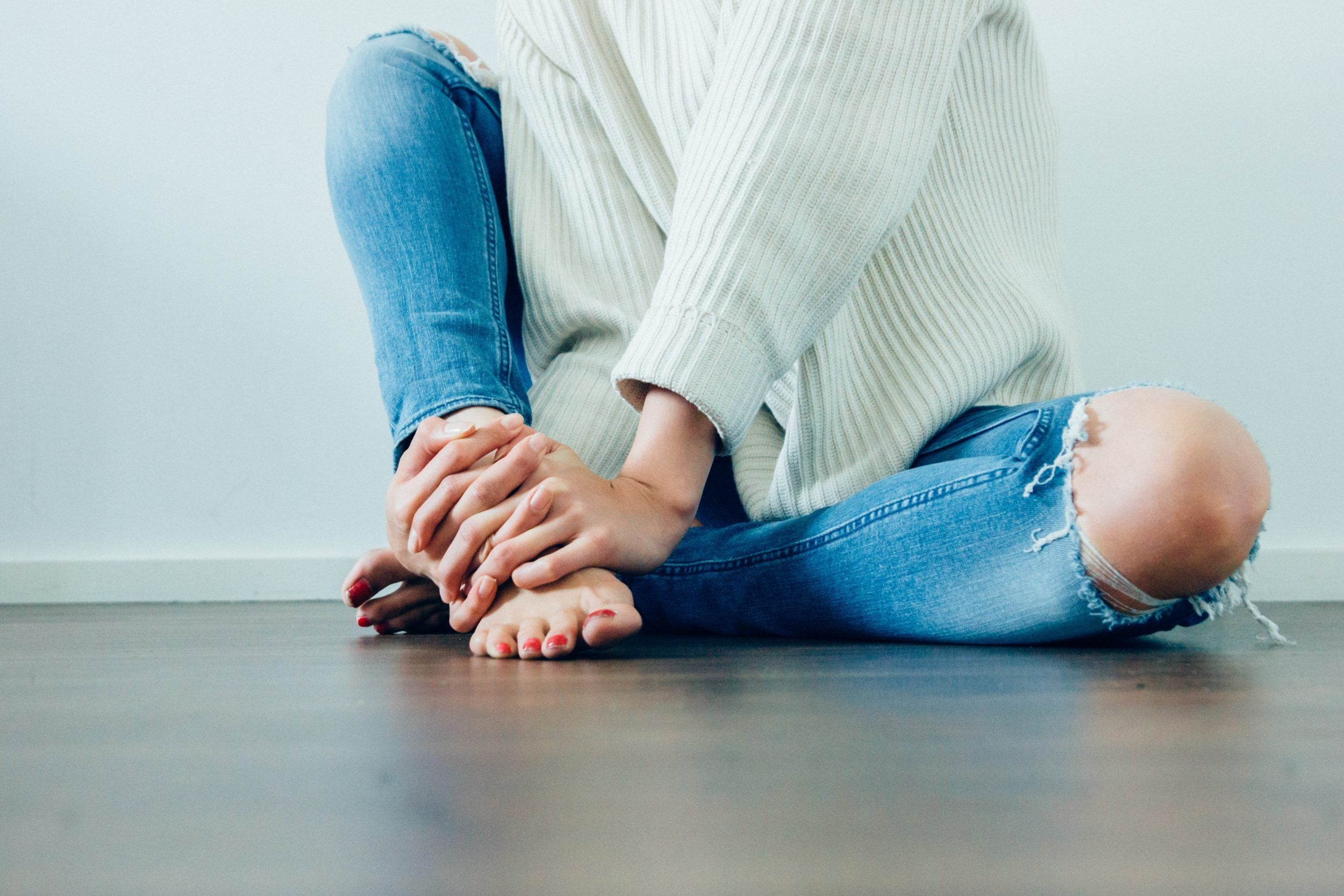Current research shows that our teenagers’ bodies are showing significant evidence of their digital lives. What exactly is the impact of technology on child growth and development?
We live in strange times when teenagers cannot touch their toes but their parents can. According to sports scientists, that is our new reality. Current research shows that our teenagers’ bodies are showing significant evidence of their digital lives.
Unless parents and schools respond appropriately, the consequences will be that our young people will experience greater rates of painful injury and poorer long-term quality of life.
A new program at Wesley College in Perth is showing that even the fittest kids are feeling the impact of technology on their skeletal, muscular and neural systems. The College has implemented a new Long-Term Athletic Development Program, which is designed to help improve the athletic ability and well-being of all students.
Head of Sport and former NBL basketballer, Lyndon Brieffies says, “When we initially screened our top athletes, every state and national representative showed common elements of poor flexibility, poor posture and poor core strength. All of these weaknesses can lead to problems in the future. We thought if these elite athletes are suffering from these common problems, what will the average Year 7 student’s results look like?”
Think about it…Your child spends about five hours a day at school in a one-size-fits-all chair, often on computers. Then after school, you pick them up and they are standing there waiting, hunched over their phones. They get home and dump their heavy school bag and slump into the couch ready for some downtime, watching TV or gaming. What is the impact? Moreover, what can we do about it?
What is the impact of technology on child growth and development?
So far, common problems that have been discovered at Wesley and by physiotherapy practices include:

1. Swayback
Swayback is caused by poor posture such as that adopted when we are looking at phones and sitting at computers. It is characterised by slumped shoulders and a rounding of the middle back. Swayback puts more strain and weight on your back joints and ligaments. It is often caused by poor abdominal and core strength due to inactivity.
2. Poor core development
Core muscles include all the muscles from the sternum down to the pelvis and include the gluteal muscles. They need to be strong for the most basic functioning of the body, like moving around, sitting up and down or even just lifting books out of a locker.
When these muscles are not strong enough, they are unable to hold correct posture, which leads to poor development. It also causes many common injuries. Kids develop core strength when they climb, swim, run, ride their bikes and generally play. This is not happening enough.
3. Short hamstrings
When a person is seated for a lot of the time, hamstrings tighten and shorten. That is why so many teens cannot touch their toes. Shortened hamstrings have an impact on pelvis alignment, which again has a knock-on effect on spine alignment.

4. Alignment problems
It should be clear that if one part of the body is compromised, it has a domino effect on the rest of the body. From the feet up, muscle, skeletal and neural development depends upon building strength, flexibility and symmetry. Kids cannot develop effectively when they are inactive and forming poor habits in the way they do when they are on devices.
5. Text neck
Text neck is a repetitive strain injury. It is caused by continually holding the head forward and looking down, in the way we do when looking at mobile phones. At this angle, the head is unsupported and exerts about 5 kilograms of force on your neck muscles. That is about the weight of a bowling ball.
Holding our heads in this position leads to excessive tension in neck and shoulder muscles, which can cause neck and shoulder pain, spasms, nerve pain, and chronic headaches. It has also been linked to the development of early arthritis in the neck.
6. Arthritis
Arthritis is actually the term for a group of about 100 conditions that occur in joints where two or more bones meet. In Australia, more than 1 in 6 people have an arthritic condition and most are under 65 years of age. It is the leading cause of disability and chronic pain in Australia, after back pain. If kids have poor posture, poor bone alignment and low activity rates, they are more likely to develop an arthritic condition.
7. Obesity
One in four Australian children between 2 and 17 were overweight or obese in 2018. We have to get our kids moving. Obesity is going to cost our children their health and happiness. It is also going to cost our community financially. It already is.

It’s Not Too Late. This Is How Parents Can Help Straight Away…
1. Increase postural awareness.
Parents need to be aware of the standing and seated postures that are constantly being displayed by their kids and make conscious efforts to make improvements. Say, “Stand up tall, stand up straight, pull your shoulders back.” Stress the importance of stretching.
The messages from home need to be supported by teachers and coaches. Most kids don’t even realise they are sitting and standing the way they are, let alone the damage it is doing. For more extensive information on posture, www.exerciseright.com.au is useful. If your child has significant weaknesses, see a good physiotherapist.
2. Limit time on devices and be active
Change the rules about device use. Yes, you are going to be unpopular for a while, but this is a battle worth fighting. Riding bikes, walking the dog, kicking a football, climbing trees, swimming and running are how previous generations developed strength and flexibility. The opportunity for this development is lost with every moment spent in front of a device.
It is not enough to just send kids outside. Be active as a family. Kids like devices because they connect them to others or give the illusion of connection. Replace that connection with family connection or connection with friends in the real world.
3. Buy good shoes. Buy good shoes. Buy good shoes.
Feet are the foundation upon which the whole body is stacked. If feet are not properly supported, the whole body suffers. Foot and gait issues will magnify and worsen all of the other issues in the body caused by technology and genetics.
Mr Brieffies says, “You wouldn’t put cheap tyres on a Ferrari because it won’t handle properly or perform to its capability. Shoes are the same. If your children wear bad shoes that don’t support their feet, it will affect everything else in their body when they move. Give kids shoes that fit properly, especially good school and sports shoes.”
Finally…
So far, Wesley College has physically screened all students from Year 5 to Year 9. After six months of exercises specifically focussed on weaknesses in their PE classes, kids will be re-tested. We look forward to their findings.
Mr Brieffies acknowledges the time and resources necessary to ensure positive physical change in kids, but he says, “It’s worth it. They are going to be happier, more capable, more successful people with a higher quality of life.”
Why not follow Linda’s blog? You’ll receive useful information to help support your kids as they navigate their school years.
Linda would love to meet you on her Facebook page here






